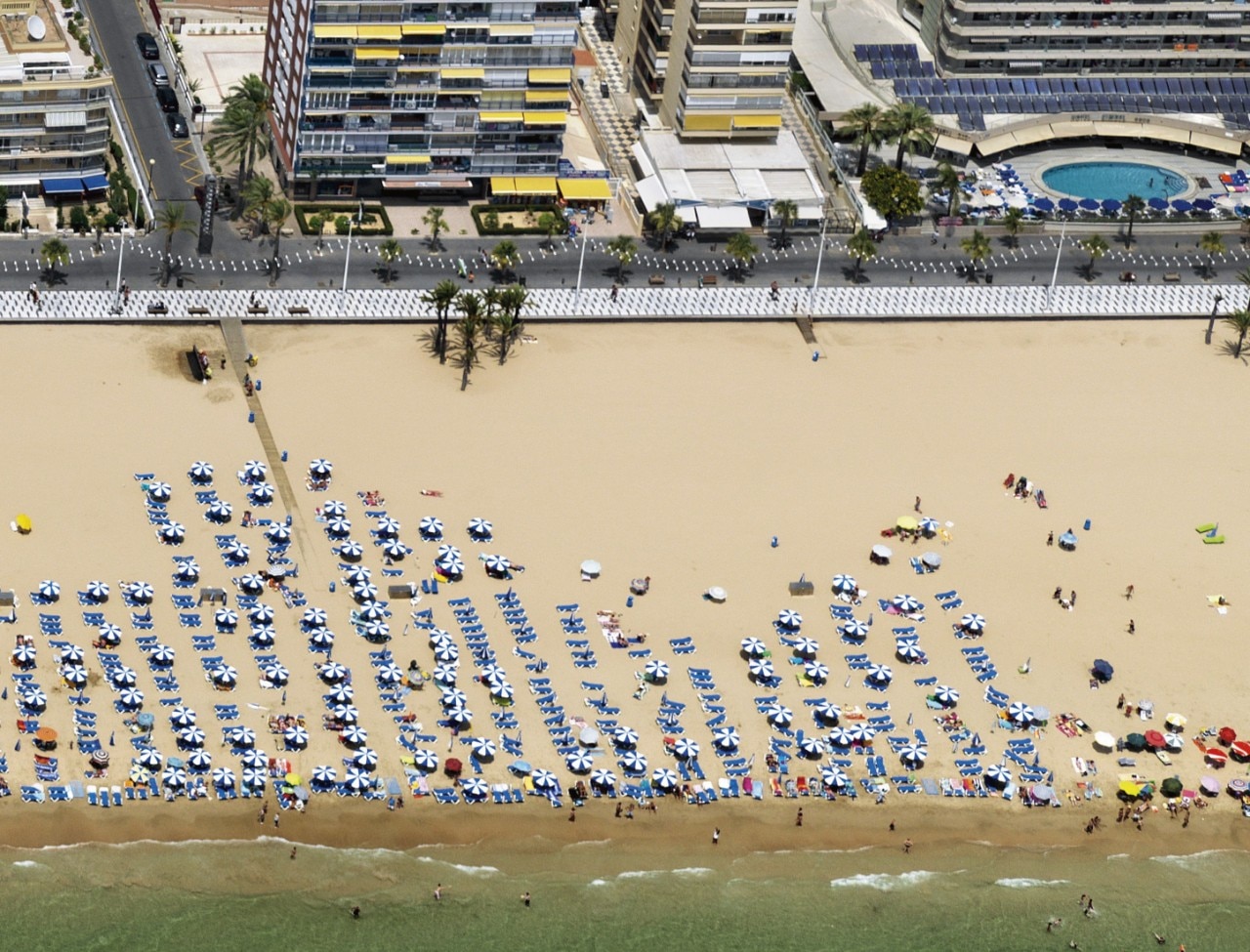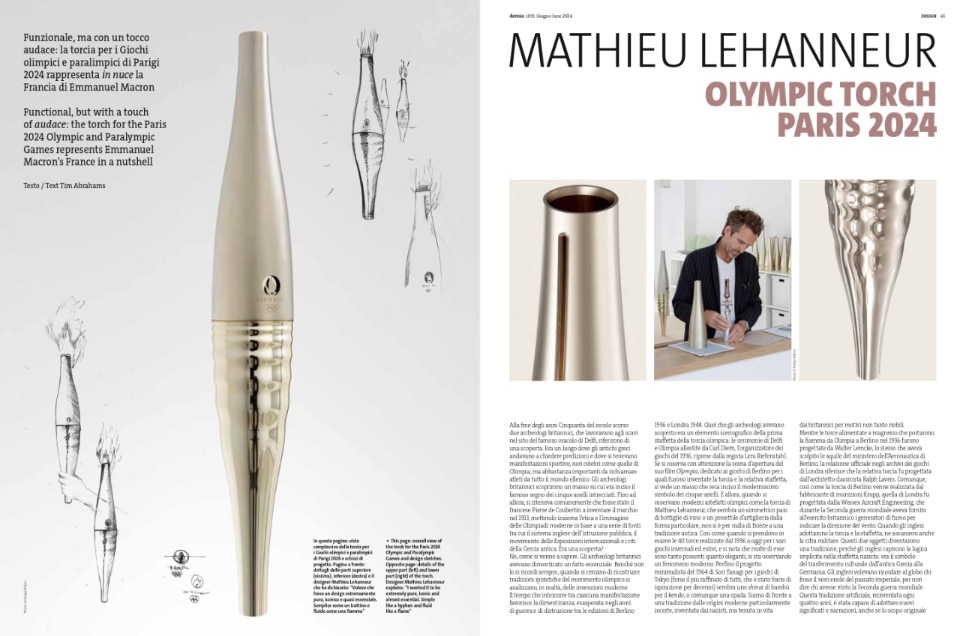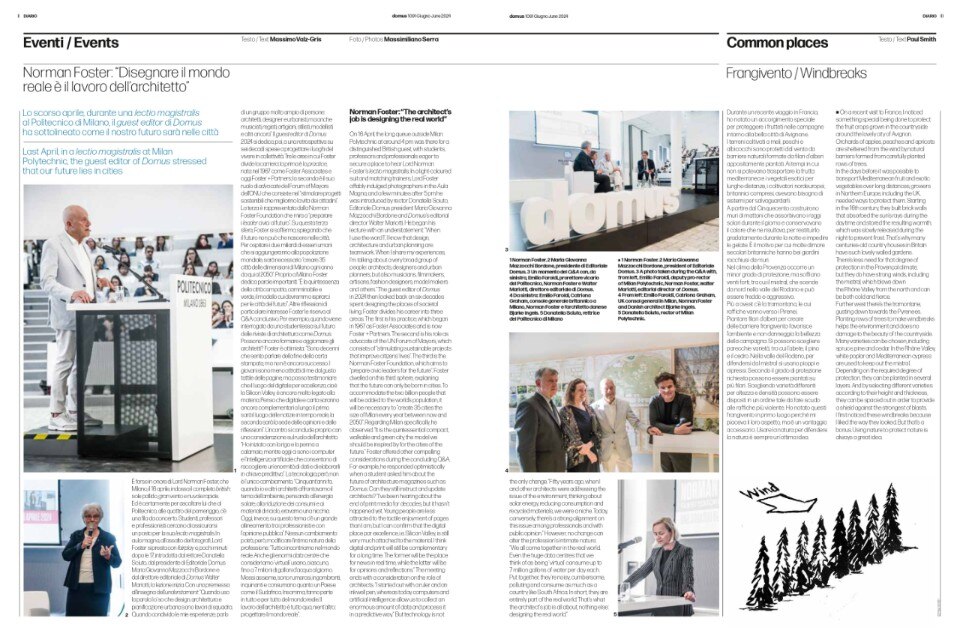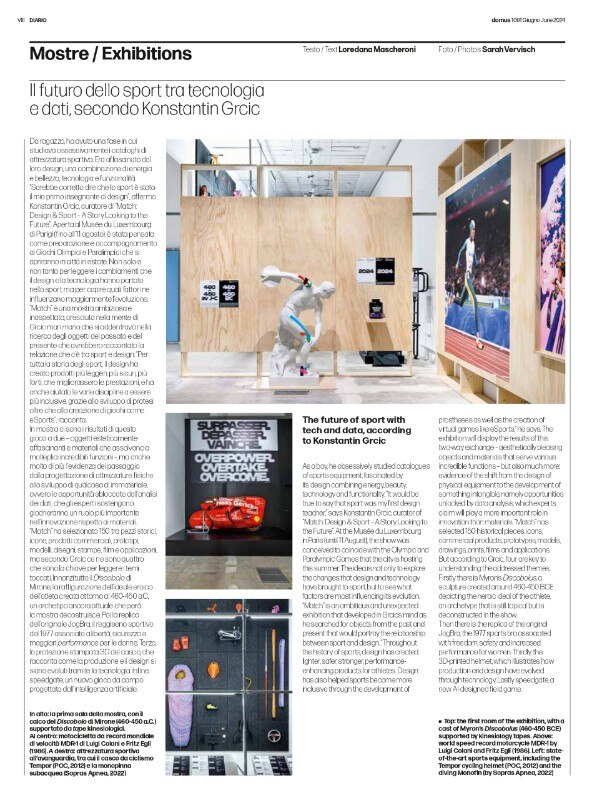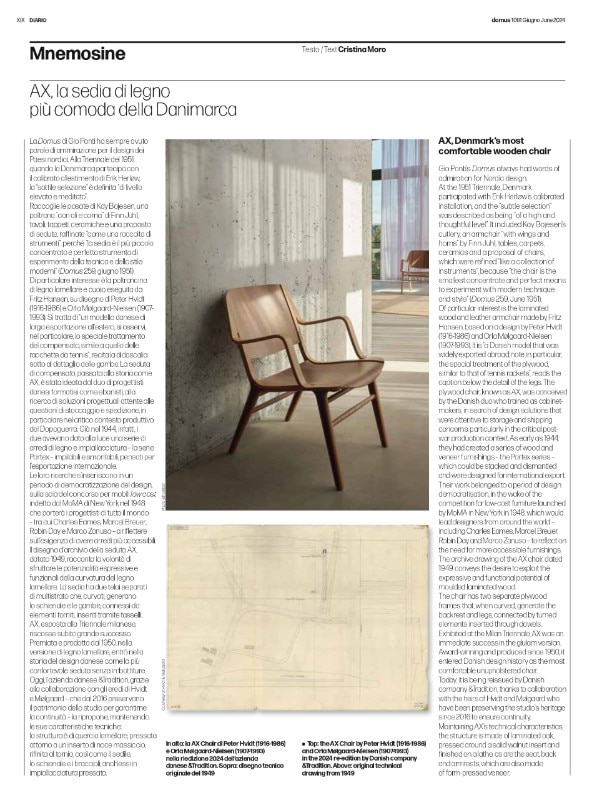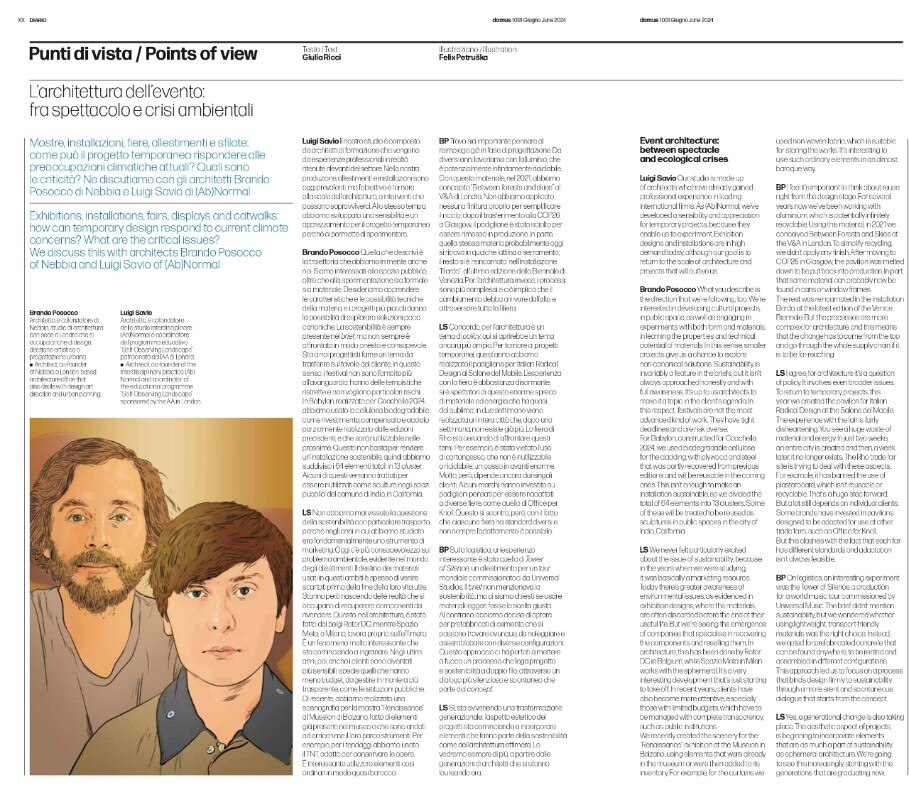Norman Foster dedicates the June issue to culture and leisure, examining the spaces, objects, and works where entertainment, sports, and community activities come to life. The editorial is centered on the art of curation, on exhibitions as collective work, much like projects. Within the world of exhibitions, Foster has “explored how the boundaries between the silos of art, architecture and design might be broken down – to show how they are culturally connected.” This “team approach,” he adds, “is the opposite of the traditional method where the architect designs the building and then feeds it down the line to the other skills.”
The three essays delve into specific themes, from sustainability in relation to the size of museums to the intersection of artificial intelligence and art. Manuel Zugaza, a Spanish art historian and museographer currently directing the Museo de Bellas Artes de Bilbao, discusses how art and culture have driven urban changes centered on sustainability, and how museum architecture has become a field of experimentation to “carry forward all that is new.” Josh Berger, an entrepreneur and media producer, explains how the recent explosion of new genres, novel ways of consuming events, and the democratization of content production are leading to an unpredictable future that is both exciting and daunting. Hans Ulrich Obrist, the Artistic Director of the Serpentine Galleries, argues that art serves as an essential perceptual training tool, helping us prepare for the social changes we face, particularly in relation to technology.
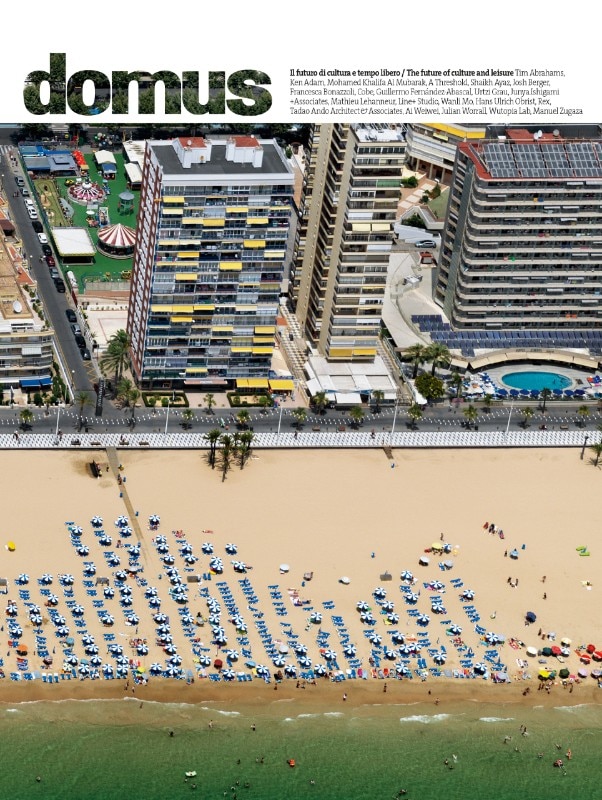
The Architecture section highlights recently completed projects in China, the United States, India, and Australia. Julian Worrall examines Junya Ishigami + Associates’ first project in China, the Zaishui Art Museum, which envisions a new relationship between architecture and nature through its connection with a water landscape. Also in China, Line+ Studio’s Yunhai Forest Service Station in Shenzhen is described by Guanghui Ding as a stage for viewing the landscape, while also showcasing the media potential of architecture. Alessandro Benetti discusses Rex’s Perelman Performing Arts Center (PAC NYC), the last public building planned in the 2004 master plan for the World Trade Center site in New York: a precious box of Portuguese marble concealing a machinist exuberance. Wanli Mo examines the radical renovation of Shanghai’s Book City by Wutopia Lab, emphasizing an experiential dimension with large open spaces and areas for public activities. Laura Ragazzola explores The Opera Park in Copenhagen, an abandoned area transformed by Cobe into a green, biodiverse urban oasis for recreation and relaxation. In India, near Bangalore, A Threshold has created a community center that starts with local materials and knowledge. Here, Shaikh Ayaz writes, the designers “wanted to explore the social potential of architecture – above all, the notion that design should be an extension of nature rather than an evil force that dominates it.” Meanwhile, in Melbourne, Tadao Ando’s MPavilion 10, as described by Urtzi Grau and Guillermo Fernández-Abascal, is the latest addition to a series of transient structures commissioned by the Naomi Milgrom Foundation, now extended in lifespan until 2025.
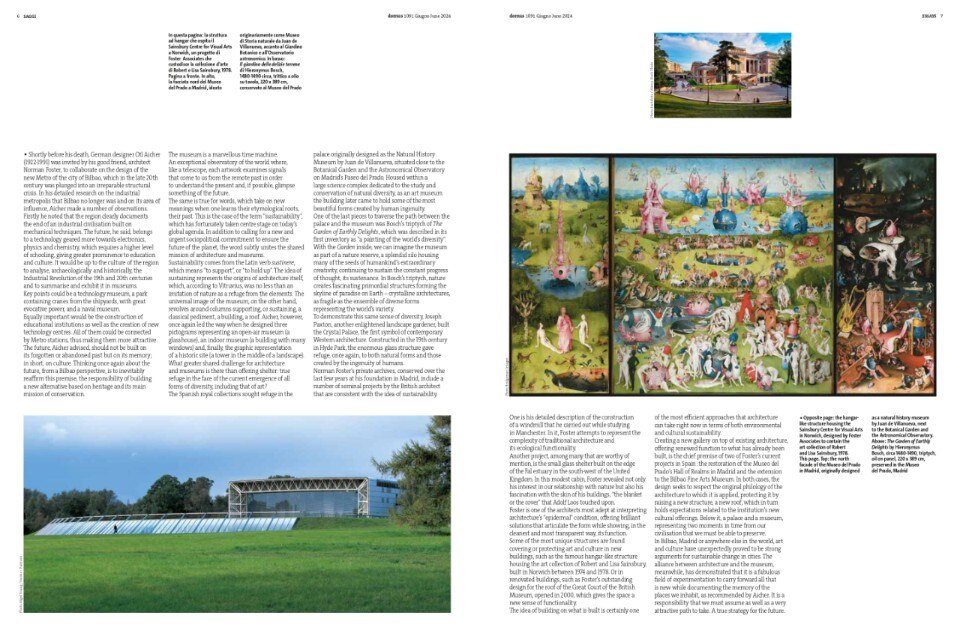
In the Art column, Francesca Bonazzoli meets Ai Weiwei at the Galleria Continua in San Gimignano during the “Neither Nor” exhibition (running until September 1, 2024). The Beijing-based artist highlights the importance of freedom, the power of emotions, and the defense of human values. “As an artist, I think I have political and social responsibilities, but I don’t claim to defend one right at the expense of another. The most important right is freedom of speech, while today there is a strong sense of exclusivity and a lack of tolerance for alternative perspectives,” he said.
In the Design section, Tim Abrahams interprets the design of the torch for the Paris 2024 Olympic and Paralympic Games as a nuanced representation of Emmanuel Macron’s France: functional yet with a bold twist.
The Archive section is devoted to Ken Adam’s film sets. The worlds he created between 1964 and 1979, including for the James Bond films, revolutionized space in ways that architects had only begun to imagine.
In Foster on art, the British architect reflects on Henry Moore’s monumental 1978 bronze sculpture for the lawn of the Sainsbury Center for Visual Arts, which prompts reflection on the intersection of art, architecture, and landscape. In Book reviews, Luca Galofaro assesses three books – by Susan Magsamen and Ivy Ross, Winfried Nerdinger and Wilhelm Vossenkuhl, and Werner Blaser – that explore the role of art and design culture in improving life. In Postscript, Foster draws parallels between project management and one of his greatest passions: marathon skiing.
Norman Foster’s interview with Mohamed Khalifa Al Mubarak, Chairman of Abu Dhabi’s Department of Culture and Tourism, delves into the Saadiyat Cultural District and its contextual significance. The district’s design is more than just a collection of buildings within walking distance of each other – like Ateliers Jean Nouvel’s Louvre Abu Dhabi (2017) and Foster + Partners’ Zayed National Museum (2025) – but rather, as Foster explains, at its core is “a much grander and more enlightened vision.”
In Cover story, Canadian photographer Edward Burtynsky tells the story behind the cover shot of a stretch of coastline in the Spanish resort of Benidorm. Despite its link to mass tourism, the high-density model of tourist blocks represents a paradigm of social and ecological efficiency.
In the Diario section, Massimo Valz-Gris reports on Norman Foster’s lectio magistralis at the Politecnico di Milano, held in Gio Ponti’s Trifoglio building during Milano Design Week. Paul Smith discusses windbreaks as an ecological device, while Francesco Franchi examines the coordinated image of the New York Botanical Garden (NYBG). Paola Carimati’s Human design column focuses on the practice of sabotage, while Loredana Mascheroni explores Konstantin Grcic’s exhibition “Match: Design & Sport – A Story Looking to the Future” at the Musée du Luxembourg in Paris until August 11. In Talents, Silvana Annicchiarico highlights the work of British-Ghanaian designer Giles Tettey Nartey. In Emerging territories, Javier Arpa Fernández explores the transformation of Riyadh from urban nightmare to green oasis. In Mnemosine, Cristina Moro traces the history of the AX chair, originally designed by Peter Hvidt (1916-1986) and Orla Mølgaard-Nielsen (1907-1993), and reissued by the brand &Tradition. Points of view, curated by Giulia Ricci, delves into the architecture of events amidst spectacle and environmental crisis, featuring contrasting perspectives from Brando Posocco of Nebbia and Luigi Savio of (Ab)Normal.
Accompanying the June issue, the EcoWorld supplement takes readers on a journey through cutting-edge design research centered on sustainability, covering everything from research and production to installations and interdisciplinary education. Contributors include Silvana Annicchiarico, Paola Carimati, Caroline Corbetta, Valentina Croci, Cecilia Fabiani, and Salvatore Peluso. EcoWorld kicks off with a spotlight on four materials presented by four designers: Francesco Faccin on wood, Lorenzo Damiani on marble, Odo Fioravanti on plastic and Alberto Meda on aluminum.


